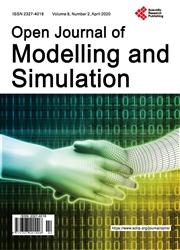Single parameter model for cosmic scale photon redshift in a closed Universe
引用次数: 0
Abstract
A successful single parameter model has been formulated to match the observations of photons from type 1a supernovae which were previously used to corroborate the standard 𝛬 cold dark matter model. The new single parameter model extrapolates all the way back to the cosmic background radiation (CMB) without requiring a separate model to describe inflation of the space dimensions after the Big Bang. The model for the redshift progression of a photon is: 1 + z =\(\frac{\text{sin}\left(\frac{13.8}{T}\right)\pi /2}{\text{sin}\left(\frac{t}{T}\right)\pi /2}\) T is the fitted parameter and t is the time when the photon was emitted, both measured in billions of years from time zero in the Big Bang. The angle is expressed in radians. The number 13.8 should be updated if an improved estimate for the time elapsed since the Big Bang is found. The single parameter model assumes that spacetime forms a finite symmetrical manifold with positive curvature.封闭宇宙中宇宙尺度光子红移的单参数模型
一个成功的单参数模型已经制定,以匹配先前用于证实标准𝛬冷暗物质模型的1a型超新星光子的观测结果。新的单参数模型可以一直外推到宇宙背景辐射(CMB),而不需要一个单独的模型来描述大爆炸后空间维度的膨胀。光子红移过程的模型是:1 + z = \(\frac{\text{sin}\left(\frac{13.8}{T}\right)\pi /2}{\text{sin}\left(\frac{t}{T}\right)\pi /2}\) T是拟合参数,T是光子发射的时间,两者都是从大爆炸的时间零点开始以数十亿年为单位测量。角度用弧度表示。如果发现自大爆炸以来经过的时间的改进估计,则应该更新数字13.8。单参数模型假设时空形成一个有限对称的正曲率流形。
本文章由计算机程序翻译,如有差异,请以英文原文为准。
求助全文
约1分钟内获得全文
求助全文

 求助内容:
求助内容: 应助结果提醒方式:
应助结果提醒方式:


